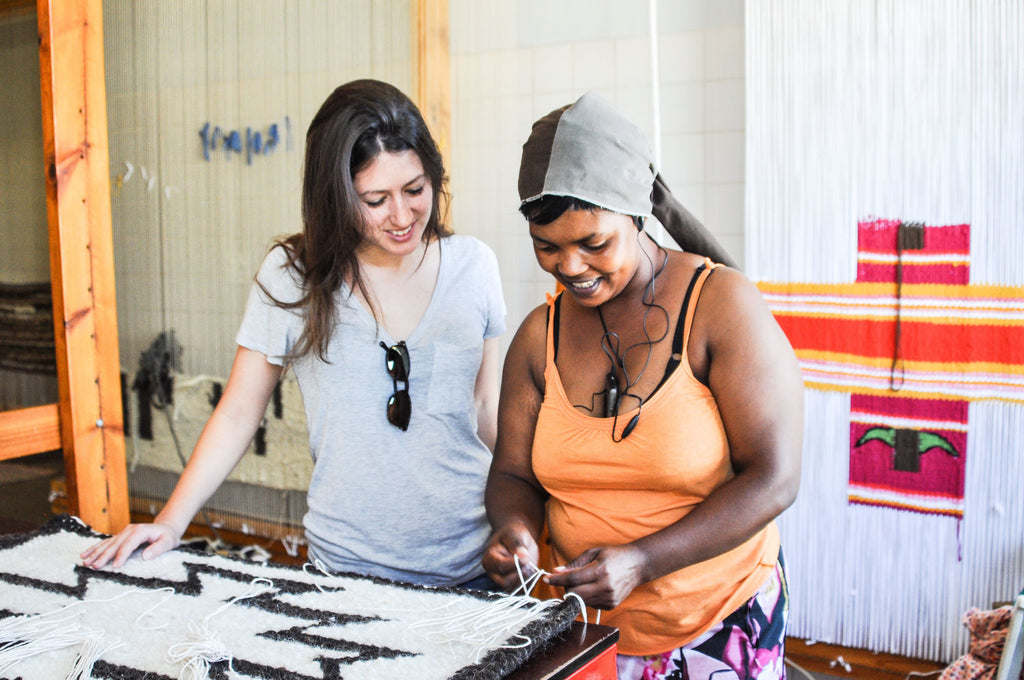Your Cart is Empty
Save 15% off your first order when you subscribe to our newsletter!

When we first decided we wanted to add rugs to our collections we weren’t quite sure what we were looking for except that they had to be something truly unique. After a lot of research, we found a community that wove beautiful natural woolen rugs out of soft, hefty wool. A couple of sampling rounds and a trip down to South Africa later, we were hooked and added these beauties to our collection.
Our soft yet sturdy reversible carpets are made from the wool of the Karakul Sheep, a breed found in Namibia and in the Northern Cape in South Africa, that is known for its ability to forage and thrive under harsh conditions. 3.5kg of this sheep’s wool is needed to weave just one square meter. The varying natural colors of the wool means each of our carpets is truly one of a kind.
From the shearing of the sheep to putting the finishing touches on each of our area rugs, the wool is passed through many hands.
Step 1: Shearing, Washing and Carding
Step 2: Spinning
Step 3: Washing and Drying
Step 4: Weaving
Step 5: Knottting
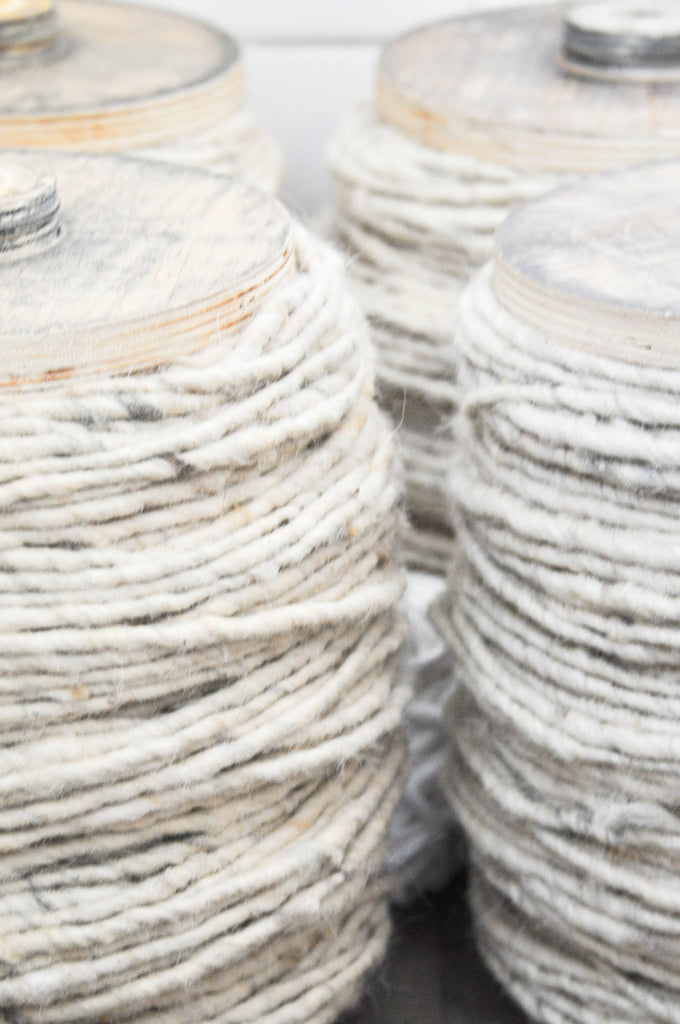
Shorn once a year, the Karakul wool is gathered and put through several processes before the weaving begins. Each step is carried out by experienced professionals to ensure the wool which goes into the final piece meets the highest quality standards: The next step is scouring & washing. Carding comes next and basically acts to detangle and align the fibers. Any color blending needed is done in the carding process and any leftover dirt, burrs and other debris is also removed.
The carded wool is then spun. The wool used in our rugs is hand spun and this is a very integral part of the process. Spinning ensures that the wool used in weaving is even and holds its form during the weaving process. The spinner feeds the wool into a machine, determining the quantity and speed to achieve the desired thickness and feel.
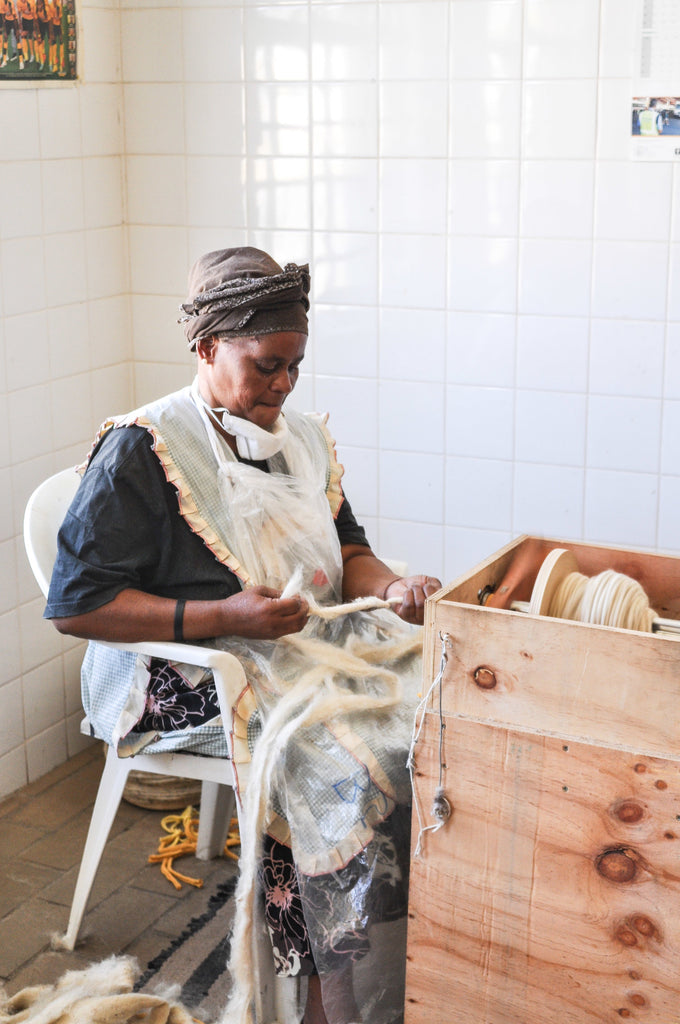
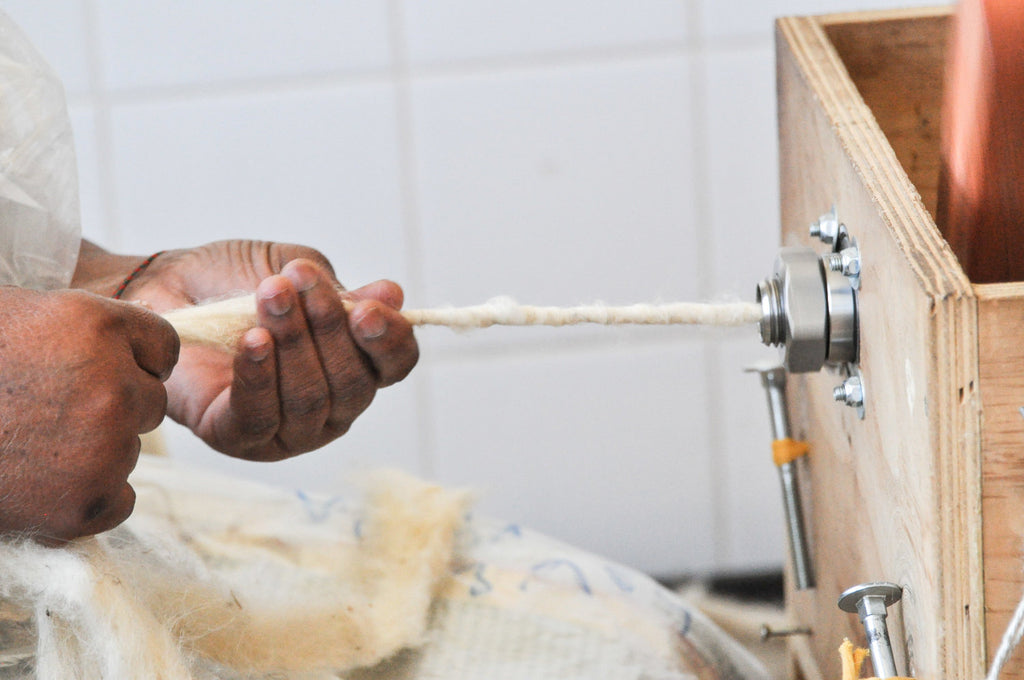
A second wash removes any dust, which may have gotten into the wool during spinning. It is then hung with weights and placed to dry before being sorted into large baskets from which the artisans begin the weaving.
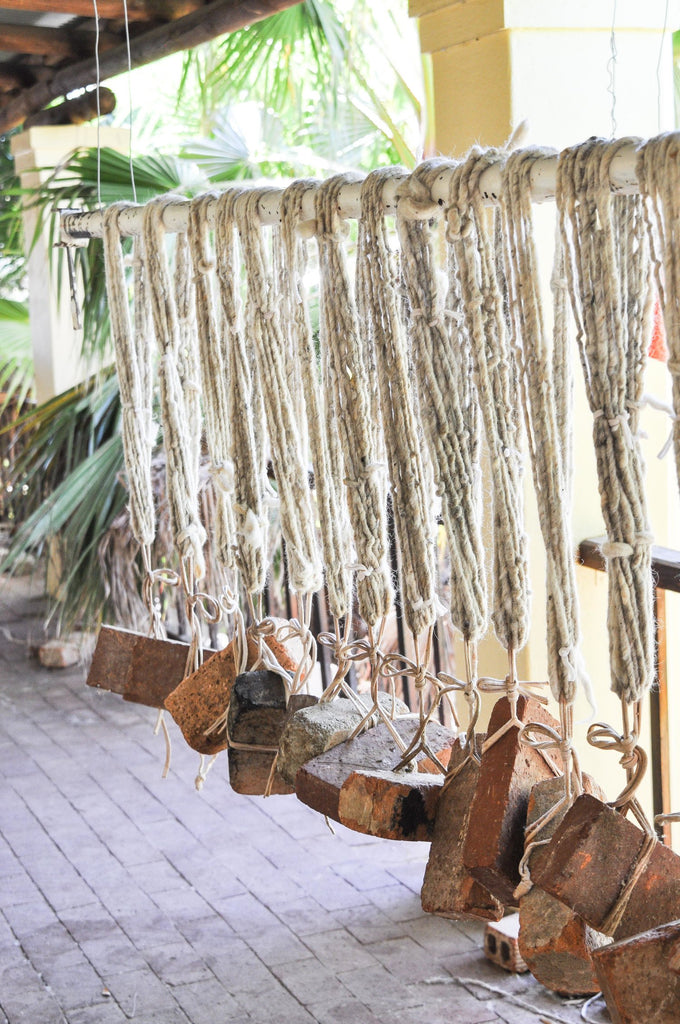
Weaving is the second to last step in the process. For each piece, the looms are set up individually with 100% cotton warp threads. The artisan draws the design on cotton fabric which is placed behind the looms to act as a template. Then, line-by-line the wool is passed through the warp thread and the rug starts to take form.
The looms vary in size and range up to just over 5 meters wide. When weaving a large carpet (sizes up to 5 by 6 meters are possible) the artisans sit or stand on a platform which moves up the vertical loom using a pulley system.

Last but not least, the rug is sent for finishing. Once cut down off the loom a special knotting technique is carried out on both ends of the rug to prevent it from unraveling. A final comb and quality check is the last step before the rug is packed and ready for shipment.
